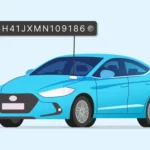Towing is the process of pulling a car behind another one. The vehicle pulling it is known as the tow vehicle, while the one being towed is known as the trailer or dinghy. A few common towing strategies are recovery towing, trailer towing, trailering, and dinghy towing.

Tow trucks come in a variety of configurations to suit different uses, such as transporting a wrecked car to a junkyard or a damaged car to a repair shop. Tow truck companies sometimes rely on a small number of tow trucks and wreckers for regular operations. It can be easier to select the tow truck type that is suitable for your company if you are aware of the important differences between them. (Vehicle Styles)
A car carrier trailer, which is used in regular transport operations to carry multiple new or used cars at once, is distinct from a tow truck. A vehicle’s weight determines how much weight it can safely transport. Modern SUVs and trucks can tow enormous loads despite being lighter than they once were. How safe a car is to tow is determined by the wheelbase, which gauges the space between the front and back axles.
Types of Tow Trucks
Flatbed Tow Truck
Because of how it operates, the flatbed tow truck may also be referred to as a “slide” or “rollback” truck. A long hydraulic flatbed with an inclined back end that lowers completely to the ground is its most prominent feature. Before the truck bed is lowered back to a level position, the car that needs to be towed will be driven or dragged onto the bed and secured.
The most common kind of tow truck is the flatbed, which has a number of uses. The vehicle being towed is securely mounted on a flatbed, and it is raised off the ground. A flatbed is used for immovable vehicles as it pulls the immovable vehicle onto the bed.
Wheel-lift tow truck
Hook and chain tow vehicles gave way to wheel-lift tow trucks, but they operate a little differently. These trucks use a metal yoke rather than a hook and chain, which frequently only touches the wheels. Depending on the vehicle, the yoke may hook up in the front or the back underneath the driving wheels. This end of the vehicle is then raised into the air by a hydraulic or pneumatic hoist so that it can be pulled.
The bumper is protected, and there are no chains to scrape the truck’s body, even if this truck can’t provide the same level of protection as a flatbed truck.
Hook and Chain Tow Trucks
Most people would recognize the hook-and-chain tow truck as being the oldest and most common form of tow truck. These aren’t used nearly as much anymore because they impose a lot of strain on the automobiles being towed.
The hook-and-chain tow truck, as its name suggests, tows vehicles from one location to another using a hook and a chain. The axle or bumper of the car, where the hook is attached, is susceptible to strain or damage during transit. These trucks are normally not used since the chain could dent the car’s body. All-wheel or 4×4 trucks cannot be used with this type of truck since it could harm the drivetrain.
Boom Trucks
In many cases, the simplest method to rescue a vehicle is to use a boom truck, which has a hydraulic arm that extends past the vehicle. Heavy-duty boom trucks are essentially miniature versions of mobile cranes; some booms are fixed in place while others may move about.
Boom trucks used to hoist the vehicles using a hook and chain technique, but nowadays, the trucks are outfitted with belt lifts or slings, which are a little safer to handle. Together, the boom and winch, along with the strapping, can raise automobiles out of precarious situations and tow them to safety. Once more, all-wheel drive vehicles cannot be pulled by this kind of vehicle because it could damage or disturb the drivetrain.
Integrated Tow Trucks
The most typical combination for an integrated tow truck, which employs two distinct systems, is a boom and a wheel lift combined into one unit. Integrated trucks contain controls on the inside of the vehicle, making it possible to swiftly lift up a vehicle without ever leaving the truck. These are handy for short projects where a full boom truck may not be necessary.
Due to the arms’ deep integration with the vehicle’s core, which increases stability and capability, these trucks can be either mid-size or heavy-duty pickups.
Underlift or Frame-Towing Tow Truck
Due to their ability to rapidly and easily remove disabled automobiles from the road, under-lift tow trucks are perfect for removing vehicles that have been in accidents.
They are not recommended for towing automobiles that have broken down, though, as they risk harming the suspension.
Because of this, the majority of tow truck businesses will have flatbed tow trucks in their fleet.
Rollback Tow Truck
Rollback tow trucks can be used to move vehicles that have been in accidents as well as the usual disabled or damaged vehicles.
A winch is a feature of rollback tow trucks that are used to draw the vehicle into the truck’s bed.
The winch is used to secure the car once it has been placed on the bed.
Rollback tow trucks can be found in many different sizes and configurations, which makes them suitable for a range of requirements.
Medium Duty Wrecker
Transporting automobiles that are too big or heavy to be hauled by a conventional tow truck requires the employment of a medium-duty wrecker, a specific type of tow truck.
Buses, recreational vehicles, and commercial trucks may all be transported with medium-duty wreckers because they can lift up to 10 tons.
Winches, ramps, and dollies are just a few of the additional features that medium-duty wreckers offer that make them ideal for their jobs in addition to their lifting capacity.
They can be utilized in the construction industry and other sectors for duties like moving equipment and materials in addition to being frequently used by tow firms to move broken autos.
No matter the use, a medium-duty wrecker is a strong and flexible piece of equipment that can help the job done.
Heavy Duty Wrecker
The tow truck known as a “Heavy Duty Wrecker” is used to relocate automobiles that are disabled, incorrectly parked, impounded, or otherwise unfit for driving.
This covers automobiles, vans, buses, motorbikes, and construction machinery.
A heavy-duty wrecker is used for larger automobiles and has a higher capacity than a regular tow truck.
The majority of heavy-duty wreckers include a boom winch to hoist the car onto the truck’s bed.
Before being moved to the target position, the vehicle is next chained or strapped together.
To power lights and tools, many heavy-duty wreckers also feature onboard generators and air compressors.
Semi-Truck Tractor with a Trailer
A huge truck used to transport cargo over long distances is called a Semi-Truck Tractor with a Trailer and a Full Load of Vehicles.
The trailer, which is fastened to the truck’s back, is pulled by the tractor portion of the vehicle.
Typically, the trailer is loaded with cargo that needs to be moved, including cars, trucks, and other vehicles.
Long-distance transportation is impossible without the large, strong semi-truck tractor with a trailer and a full load of automobiles.
It would be extremely challenging to transport big amounts of commodities from one location to another without these trucks. Professional drivers with years of long-distance driving expertise typically operate these vehicles. Give one of these vehicles plenty of room if you ever see one on the road!
How does a Tow Truck work?
Depending on their intended usage, tow trucks come in a variety of sizes and designs.
The most popular tow truck design is the flatbed, which loads and moves automobiles using a hydraulic lift.
Wheel-lift, hook-and-chain, and boom trucks are other varieties of tow vehicles.
Tow trucks are specially made to move disabled or impermissibly parked cars. The vehicle is lifted onto the truck bed using a boom winch, which is a feature of most tow vehicles.
Before being moved to the target position, the vehicle is next chained or strapped together.
The front wheels of the car being towed are supported by a dolly, which is sometimes included with the tow truck.
How are tow trucks used?
The following are some additional services that towing businesses offer with their tow trucks in addition to collecting illegally parked vehicles:
- Collecting abandoned cars
- Moving automobiles to impound lots
- Helping drivers who are gas-starved
- Giving dead-battery automobiles jump starts
- Changing flat tires and pulling cars out of ditches
- Removing damaged or malfunctioning automobiles after collisions
As a result, the tow truck is protected from damage while the car is being towed.
Buying a tow truck – What is the average cost?
You can buy new or old tow trucks. Depending on the size and features of the truck, new tow trucks can cost anywhere from $30,000 to $100,000.
Although they can be purchased and are often less expensive than new tow trucks, used tow trucks might not have all of the characteristics of a new tow truck.
It’s crucial to think about the kind of vehicle that will be hauled and the characteristics you want in a tow truck before making a purchase.
Join 25,000+ smart readers—don’t miss out!









